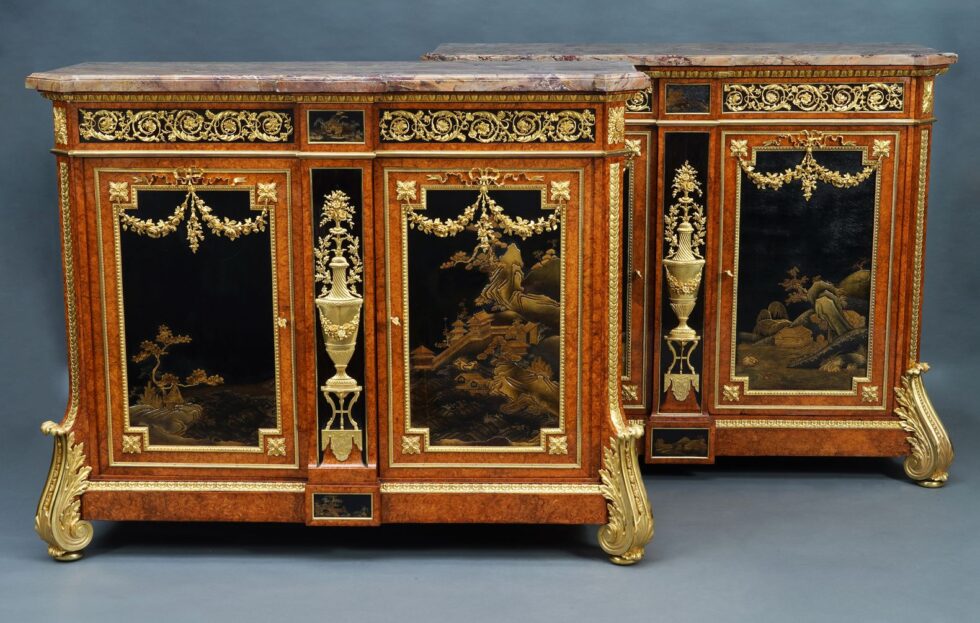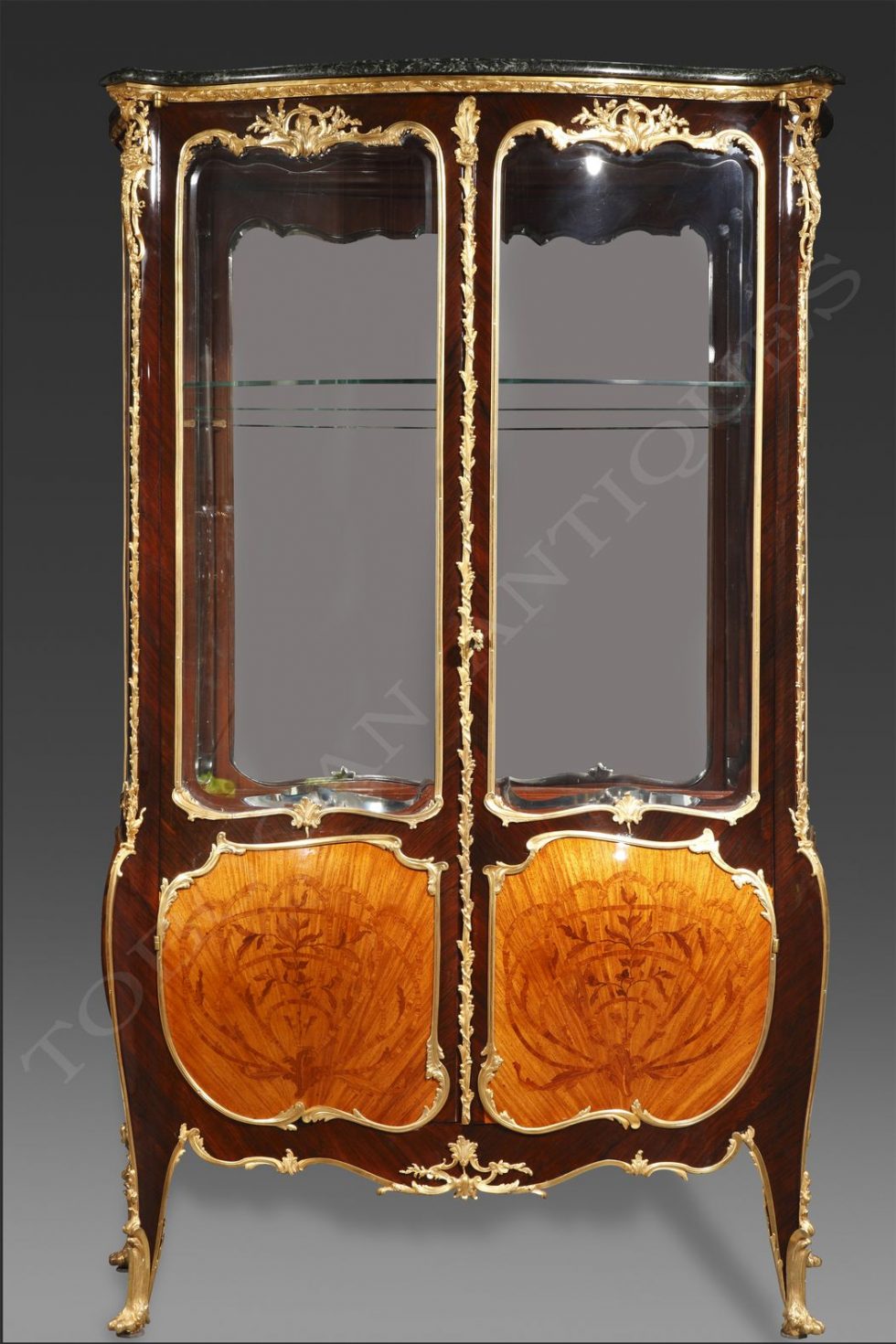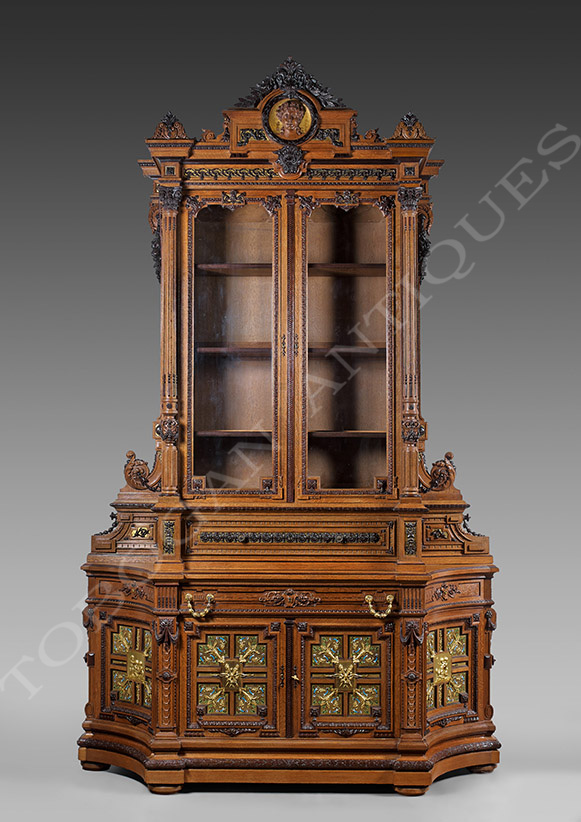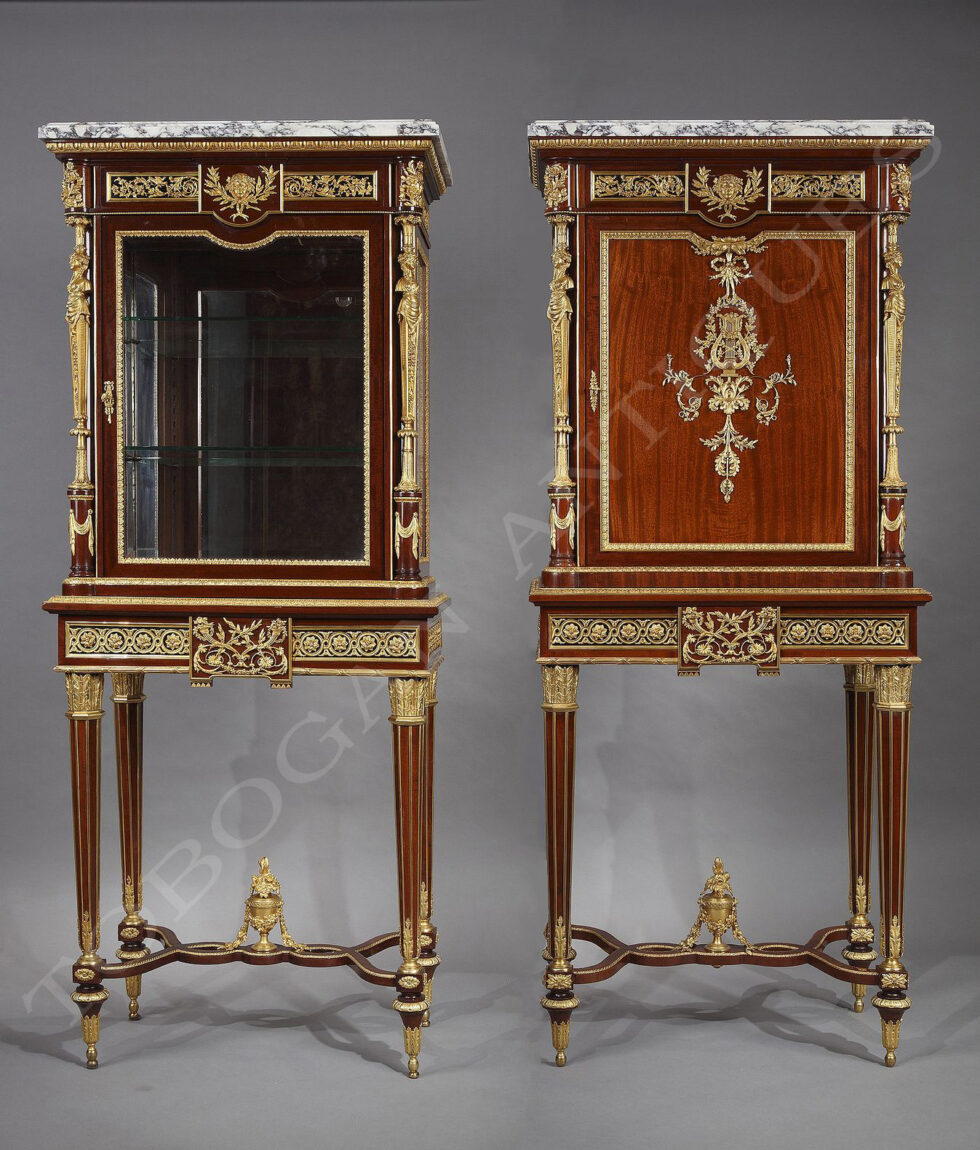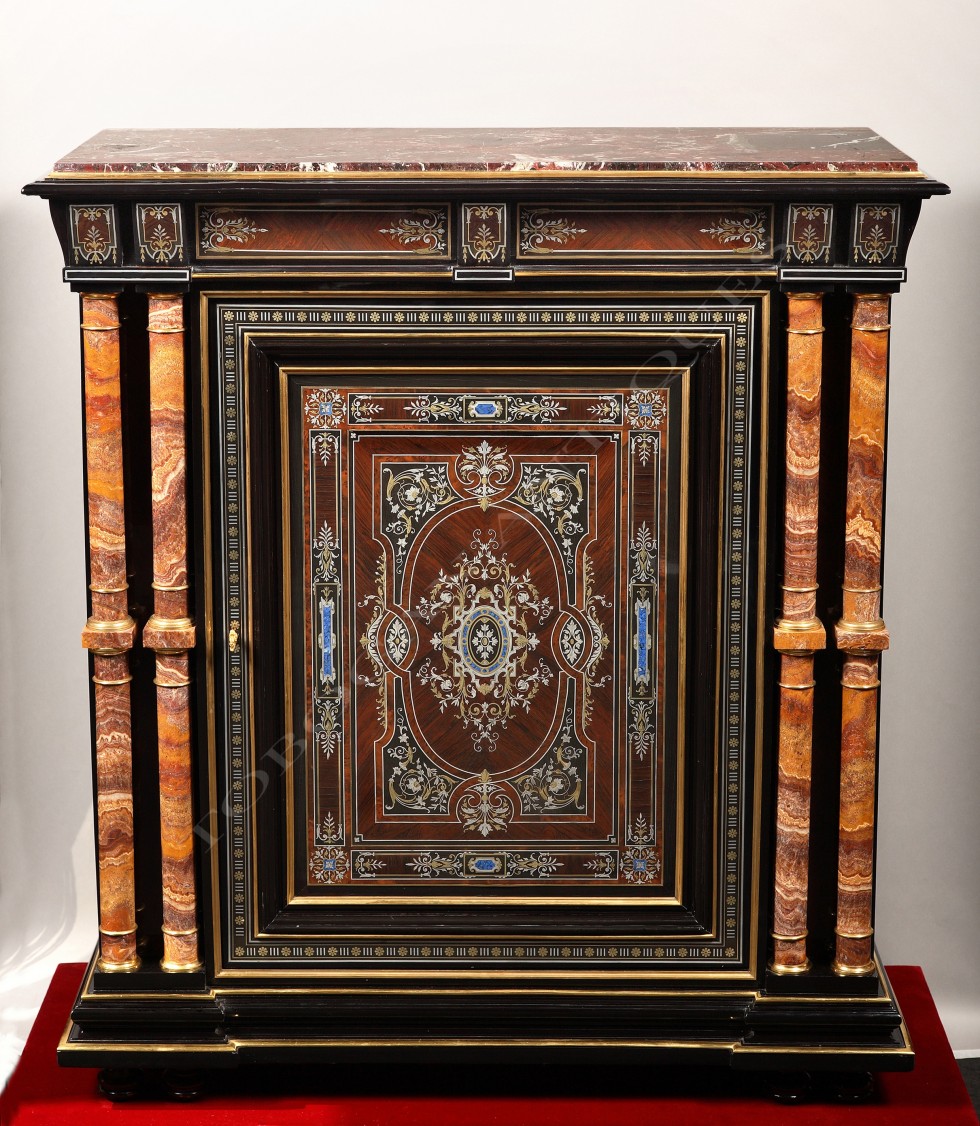J. Leleu
Decorator
(1883-1961)
Inlaid Cabinet
Signed J Leleu
France
Circa 1940
Rio rosewood, Indian rosewood, Sycamore, Mother-of-pearl
Height : 137,5 cm (54,1 in.) ; Width : 157 cm (61,8 in.) ; Depth : 39,5 cm (15,5 in.)
Rare Rio rosewood veneered cabinet opening in front with three doors each revealing two removable shelves in sycamore. The doors are adorned with a luxuriant marquetry of Indian rosewood and mother-of-pearl flowers. Surmounted by a step on a brass plate ending with windings, it rests on four curved legs connected by an apron underlined with a brass net.
related work


Meubles d’appui exposed by Leleu at the Salon d’automne de 1945, reproduced in Mobilier et Décoration, Automne 1945, Editions Edmond Honoré, p.48
Biography
Jules-Émile Leleu, born in Boulogne-sur-Mer in June 17th, 1883 and died in Paris in July 11th 1961, is a French designer and decorator who distinguished himself during the Art deco period. Jules-Émile Leleu studied at the Beaux-Arts in Boulogne-sur-Mer then the trompe-l’œil in Brussels. In 1909, he replaced his father in the painting business he had founded in 1882. Associated with his brother Marcel, he added a “decoration” branch to the company’s activity and created a cabinetmaking workshop in 1910. The house takes the name of “Leleu Frères” and acquires in 1920 a three-floors private mansion in Boulogne-sur-Mer, then in 1924, he settles in Paris at 65 avenue Victor-Emmanuel III which will become avenue Franklin Roosevelt.
At the International Exhibition of Modern Decorative and Industrial Arts in 1925, he exhibited a dining room which won him a Grand Prix. In 1926, Jules Leleu opened a new activity : the interior design of ocean liners, including the “Atlantique”. Leleu realized the installation of French and foreign embassies, and works for Prince Pierre of Monaco, Prince Takatma Tsu of Japan, the King of Romania. He created the French salon of the Palais des Nations for the League of Nations in Geneva – which became the United Nations Office – preserved to this day in its original state. With his son André, Jules Leleu carried out the interior design, for the Air Force, of the Martin de Janville sanatorium. After the 2nd World War, he carried out numerous projects including the design of the private dining room of the Élysée Palace and the design of the presidential train inaugurated by President René Coty. At that time, Leleu moved to New York in the chic Upper East Side district next to Baccarat with which Maison Leleu had partnered. The Compagnie Générale Transatlantique, which is constructing the “France” liner, entrusts the Maison Leleu with the library, the reading and writing room and the bridge room. In 1957, the interior design of the villa “Medy Roc” in Cap d’Antibes was entrusted to Leleu. In 1962 the President of the Republic of Tunisia, Habib Bourguiba, asked Leleu to furnish the large dining room, the bedroom of Madam President, and the bedroom of the President made of shagreen. The Salon des industries du commerce de Bureau (SICOB) is moving to the C.N.I.T. at La Défense in 1958, and Leleu presented a different creation there every year for about ten years.
In 1961, Jules Leleu died in a traffic accident, but administrations such as the Palace of Congresses in Versailles, and banks such as Société Générale, Banque Populaire and companies such as Librairie Larousse and Librairie Hatier continued to be furnished and decorated by Maison Leleu. The firm closed in 1973.
The works of the Maison Leleu are exposed at the Metropolitan Museum de New-York, the Musée des années 30 de Boulogne-Billancourt, the Musée des Arts décoratifs de Paris and at the Piscine de Roubaix.
Bibliography
Jules et André Leleu, Vivane Jutheau, Editions Vecteurs, Paris, 1989
Contact us
Tobogan Newsletter
If you want to be up-to-date with our new acquirings you can sign up to our newsletter.




